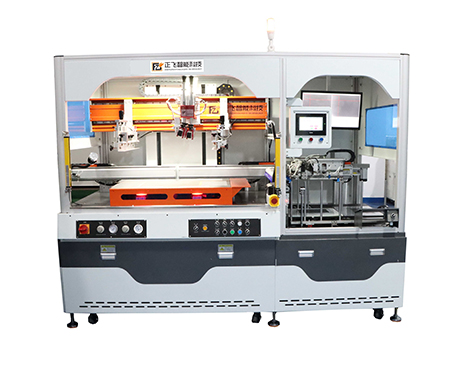In the screen printing process, the thickness of the ink layer is an important factor affecting the printing quality and functional performance. If the ink layer is too thick, it may not only lead to blurred patterns and prolonged drying time, but also cause problems such as adhesion, deformation or poor adhesion in the subsequent processes. Therefore, identifying the causes of overly thick ink layers and making effective adjustments are crucial for maintaining printing consistency and improving product yield.
Excessive ink layer usually stems from the following aspects:
The mesh count of the online version is relatively low
The mesh count of the screen determines the number of ink openings that can pass through within a unit area. The lower the mesh count, the larger the mesh, and the greater the ink volume. If low-mesh mesh is used to print detailed patterns or small graphics, it is easy to cause the ink layer to be too heavy. The solution is to select a screen with a higher mesh count based on the width of the pattern lines, the characteristics of the ink, and the surface tension of the substrate. For instance, the mesh size can be raised from less than 120 mesh to over 200 mesh.
2. The Angle and pressure of the scraper were improperly set
If the Angle of the scraper on the screen is too small (i.e., it is pushed horizontally), it will increase the residual ink amount, resulting in a thick ink layer. The reasonable Angle of the squeegee should be controlled between 65° and 75°, and the squeegee pressure should be adjusted appropriately according to the ink properties and printing speed to avoid the occurrence of "ink compression".

3. The viscosity of the ink is too low or the thinner is used improperly
When the viscosity of the ink is low, it is more likely to penetrate through the mesh, thus accumulating to form thick ink. It is recommended to check the ink's service life, storage conditions and stability after opening the cap, and adjust the amount of thinner added according to the climate and production environment to prevent viscosity changes from affecting the printing effect.
4. Issues with the setting of the ink return knife (also known as the return scraper knife)
When an automatic screen printing machine is equipped with a dual scraper system, if the position of the ink return knife is too low or the pressure is too high, it is easy to cause excessive ink to flow back to the image area, resulting in repeated ink accumulation and thickening of the ink layer after printing. At this point, the gap between the ink return knife and the wire mesh needs to be adjusted to reduce the influence of back pressure.
5. The tension of the screen plate is uneven or the wear is severe
When the screen is loose, partially sunken or reused too many times, ink may accumulate at the lower part of the screen during scraping, forming thick film areas. The tension of the mesh plate should be regularly inspected to ensure that the operation standards for pulling the mesh and fixing the frame are consistent.
In actual production, adjustments to ink layer issues should proceed from the surface to the depth. First, check the ink state and the compatibility of the screen, and then gradually fine-tune the printing parameters. Meanwhile, by using thickness gauges or visual inspection equipment to assist in monitoring the ink layer thickness, higher product consistency and traceability can be achieved.